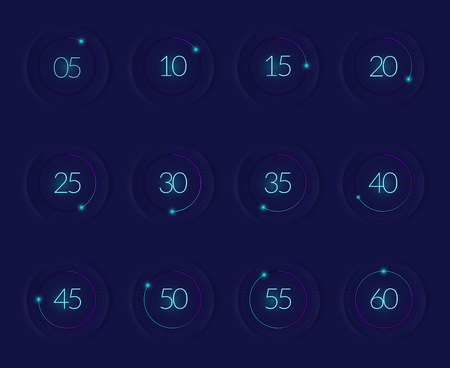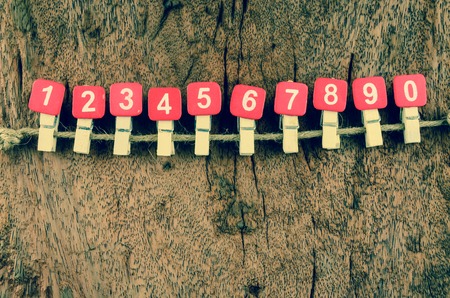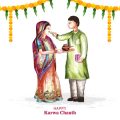Introduction to Rahu and Ketu in Vedic Astrology
In the timeless wisdom of Jyotish Shastra, Rahu and Ketu emerge as enigmatic shadow planets, weaving intricate karmic patterns across the canvas of a natives Kundli. Unlike the visible Navagraha, these Chhaya Grahas possess no physical form but hold immense sway over the destinies of those touched by their energies. Their roots are deeply embedded in ancient Sanskrit lore, where cosmic battles and divine interventions gave birth to their existence during the Samudra Manthan—the legendary churning of the ocean. Here, Rahu symbolizes the insatiable quest for material experience and illusion, while Ketu stands as the beacon of spiritual detachment and moksha. The interplay between these two nodal points not only reflects our soul’s journey through maya but also mirrors the duality of human aspiration and transcendence. Through centuries, seers have revered Rahu and Ketu as harbingers of transformation—catalysts that awaken latent desires or propel one toward higher consciousness. In every Kundli, their placement whispers tales of past karmas, unresolved lessons, and the ceaseless dance between worldly attachment and ultimate liberation, echoing through the sacred verses of Vedic scriptures.
2. Typical Life Experiences of Rahu-Dominated Natives
Life Trajectory: The Unconventional Path
Rahu-dominated natives, according to ancient Vedic scriptures and the collective wisdom of Indian society, are marked by a distinct life trajectory that often defies social norms. Their journeys are replete with unexpected twists, sudden rises or falls in status, and frequent relocation—much like the restless energy attributed to Rahu itself. These individuals may find themselves at the crossroads of destiny, often breaking away from traditional vocations or familial expectations.
Psychological States: The Churning Mind
The psychological landscape of a person under strong Rahu influence is likened in indigenous narratives to the churning of the ocean (Samudra Manthan). There is an inherent restlessness, an insatiable curiosity, and a tendency towards anxiety or obsession. The mind oscillates between extremes—ambition and confusion, desire and dissatisfaction. This internal turbulence can manifest as both brilliance and chaos in their personal and professional lives.
Material Obsessions vs. Spiritual Lessons
Rahu’s shadowy nature often propels natives towards material ambitions, sometimes bordering on obsession. The hunger for wealth, recognition, or foreign connections is pronounced. Yet, as per Indian beliefs, these experiences are not ends in themselves but rather stepping stones towards higher spiritual awareness. The table below encapsulates this duality:
| Material Manifestations | Spiritual Lessons |
|---|---|
| Pursuit of luxury and status symbols | Detachment from worldly illusions (Maya) |
| Desire for foreign lands or cultures | Realization of universal brotherhood (Vasudhaiva Kutumbakam) |
| Addiction to power or fame | Surrendering ego to divine will (Ishwara Pranidhana) |
Narratives from Indigenous Indian Culture
Many folk tales and classical stories, such as those found in the Mahabharata and local village lore, describe Rahus children as outliers—those who challenge established order yet serve as catalysts for collective transformation. Elders in Indian communities often recount how such individuals bring change, provoke debate, or introduce new ideas, acting as instruments of cosmic evolution.
In conclusion, while Rahu-dominated natives may struggle with inner turmoil and external instability, their journey is ultimately one of profound transformation. Through embracing both the material temptations and the inevitable spiritual lessons prescribed by Rahu’s influence in the kundli, they traverse a path uniquely their own—one that echoes the timeless rhythm of samsara and moksha within Bharatiya tradition.

3. Typical Life Experiences of Ketu-Dominated Natives
Within the sacred tapestry of Jyotish Shastra, Ketu is revered as the mystical Moksha Karaka—an enigmatic planet whose influence transcends the material plane. For natives whose kundli is dominated by Ketu, life unfolds with a unique rhythm, woven with threads of detachment and spiritual yearning. Let us delve into the experiential patterns and cultural nuances that define their journeys.
Patterns of Detachment and Disinterest
Ketu-dominated individuals often display an innate sense of vairagya, or detachment, from worldly pursuits. This disinterest is not born out of dissatisfaction, but rather a soul-deep realization that material achievements are transient. Such natives may find themselves less attracted to social status, wealth, or familial expectations—a trait recognized and sometimes misunderstood within traditional Indian families.
The Spiritual Seeker’s Path
Indian culture, with its ancient roots in tapasya (austerity) and sannyasa (renunciation), provides fertile ground for the Ketu-influenced soul. These natives are naturally inclined toward spiritual quests, pilgrimage to tirthas (holy places), and association with gurus or sadhus. The longing for moksha—the ultimate liberation—often overshadows mundane desires, guiding them towards yoga, meditation, and self-enquiry as prescribed in the Upanishads.
Mystical Phenomena and Unseen Realms
The veil between worlds is thin for those under Ketu’s shadow. Mystical experiences—prophetic dreams, intuitive insights, unexplainable coincidences—are frequent companions. In rural Bharat, elders may recount tales of such natives communicating with ancestors or experiencing visions during amavasya nights. These phenomena are interpreted through the lens of karma and past lives, deeply rooted in Indian philosophical thought.
Cultural Integration and Social Challenges
While Indian society venerates ascetics and saints, Ketu’s detachment can also bring challenges in daily life. Family members might struggle to understand a loved one’s lack of ambition or desire for solitude. However, community elders versed in astrology often counsel patience and support, recognizing that such souls walk a path blessed by the Devas for higher spiritual evolution.
In Summary
Ketu-dominated natives exemplify the timeless pursuit of inner truth over external validation. Their lives mirror the teachings of Adi Shankaracharya and other rishis who proclaimed that true joy lies beyond Maya’s illusions. To witness such a journey within one’s family or community is to glimpse the profound wisdom embedded in India’s astrological heritage.
4. Societal Perceptions and Cultural Interpretations
In the vast cultural tapestry of Bharat, the influence of Rahu and Ketu in a natives kundli is enveloped by centuries-old beliefs, superstitions, and communal wisdom. The narratives surrounding these shadow planets are not merely astrological; they are woven into the social consciousness and daily lives of countless families across the land.
Community Understanding of Rahu and Ketu
Within many regions, especially in rural Bharat, Rahu and Ketu are often perceived as powerful karmic nodes capable of causing both upheaval and unexpected fortune. Their placements in an individuals horoscope invite discussions that go beyond planetary movements—delving into questions of destiny, ancestral debts (pitru dosha), and spiritual evolution. Community elders frequently recount stories where sudden changes in fortune, health crises, or inexplicable events are attributed to the malefic gaze of Rahu or the mysterious influence of Ketu.
Superstitions Associated with Rahu-Ketu Dasha
The shadowy nature of these grahas has given rise to several superstitions. For instance, it is commonly believed that natives undergoing Rahu or Ketu dasha should avoid starting new ventures on Tuesdays or Saturdays. There exists a notion that wearing specific colors or consuming certain foods during transit periods can either mitigate or intensify the effects. These beliefs, though varied across regions, form an essential part of local folklore.
Common Superstitions Related to Rahu and Ketu
| Superstition | Associated Graha | Cultural Region |
|---|---|---|
| Avoiding new beginnings on Tuesdays/Saturdays | Rahu & Ketu | Pan-Indian |
| Wearing blue clothes to pacify Rahu | Rahu | Northern Bharat |
| Offering black sesame seeds at temples | Ketu | Southern Bharat |
| Avoiding marriage ceremonies during Rahu Kalam | Rahu | Tamil Nadu, Kerala |
Traditional Remedies (Upayas) and Guidance from Elders & Jyotishis
The response to challenging Rahu or Ketu placements is often rooted in both tradition and faith. Family elders—guardians of ancestral knowledge—offer simple upayas such as lighting lamps during eclipse periods or reciting mantras like “Om Ram Rahave Namah” or “Om Ketave Namah.” In parallel, jyotishis (astrologers) provide personalized remedies based on the native’s kundli: donation of urad dal (black lentils), feeding stray dogs (Ketu), fasting on Saturdays (Rahu), or performing specific yajnas for planetary peace.
Table: Common Upayas for Rahu and Ketu Dosha Mitigation
| Remedy/Upaya | Pertaining Graha | Purpose/Belief |
|---|---|---|
| Recitation of Durga Saptashati Patha | Rahu | Protection from illusions and obstacles |
| Feeding stray dogs on Saturdays/Ketvarat days | Ketu | Pleasing Ketu for spiritual upliftment and relief from isolation |
| Lamps with mustard oil at Shani temples during twilight hours | Rahu & Ketu (and Shani) | Diminishing negative planetary influences through light offerings |
| Charity of blue/black cloth to needy persons | Rahu & Ketu | Alleviating dosha effects via acts of service |
The intricate interplay between societal perceptions and traditional responses reveals how deeply embedded Rahu and Ketu are in the Indian psyche. These customs not only guide natives during turbulent times but also reinforce a sense of belonging within their communities, anchored by shared rituals and timeless wisdom.
5. Case Studies: Anecdotes from Natives
The Enigma of Rahu: Shadows and Silver Linings
In the heart of Uttar Pradesh, Rameshji’s life became a living testament to Rahu’s maya. Born with Rahu in his Lagna, he often felt as though he was walking through a fog—his desires ever-shifting, ambitions grand yet elusive. As elders would say, “Rahu ka saaya hai is par”—the shadow of Rahu is upon him. During his Rahu Mahadasha, Rameshji experienced meteoric success in business, but like chanchal chandra (restless moon), his peace was fleeting. Despite material gains, inner restlessness gnawed at him until he discovered solace in chanting mantras and surrendering to divine will. This transformation echoes the ancient wisdom: “Maya ke paar hi sach hai”—beyond illusion lies the truth.
Ketu’s Call: The Hermit’s Journey
Meena from Chennai always felt detached from worldly pursuits, as if she was living in vairagya (renunciation) even amid family gatherings. With Ketu placed in her fourth house, Meena faced sudden separations and unexplained anxieties. Her relatives remarked, “Ketu ne alag kar diya”—Ketu has separated her. Yet, through spiritual sadhana and seva (service), she found profound inner fulfillment. Meena’s journey exemplifies how Ketu acts as the silent rishi, stripping away attachments to reveal the atma jyoti—the soul’s light within.
Rahu-Ketu Axis: The Dance of Destiny
In Mumbai’s bustling lanes, two brothers—Vikas and Arjun—grew up with opposite poles of the Rahu-Ketu axis influencing their kundlis. Vikas, under Rahus sway in the tenth house, chased recognition like it was amrit (nectar). His rise in corporate life was meteoric but marred by scandals, leading to the proverb among his peers: “Rahu ki chaal anokhi hai”—Rahu’s moves are unique and mysterious. Meanwhile, Arjun, with Ketu in his tenth house, chose a path of simplicity and service. Though lacking fame, he was revered for his humility and spiritual depth. Their stories remind us that destiny unfolds according to one’s karmic blueprint—and that both shadows and light are part of the cosmic leela (divine play).
Transformation Through Trials
Many natives across Bharat recount similar tales where intense periods governed by Rahu or Ketu acted as triggers for self-discovery. For some, Rahu led them into whirlwinds of ambition before guiding them to surrender; for others, Ketu dismantled attachments to reveal their true dharma. As our sages say, “Gehra andhera ke baad hi ujaala hota hai”—light dawns only after deep darkness.
Conclusion: Embracing the Cosmic Drama
The lived experiences of these natives teach us that Rahu and Ketu are not merely planetary malefics but catalysts for inner evolution. Their influence, when understood with shraddha (faith) and viveka (discrimination), can lead one from confusion to clarity—from bondage to moksha.
6. Remedial Measures and Spiritual Mitigation
Understanding the Need for Upayas
In the sacred tradition of Jyotish Shastra, the influence of Rahu and Ketu in one’s kundli is viewed as a profound karmic lesson. Natives whose charts are marked by the shadowy presence of these chaya grahas often seek balance through time-tested upayas (remedies) prescribed by learned pandits and acharyas. The aim is not only to pacify the adverse effects but also to awaken spiritual awareness, enabling the seeker to transcend maya (illusion) and move towards moksha (liberation).
Mantras: Invoking Divine Vibrations
Chanting specific mantras has been an integral part of Indian spiritual practice since Vedic times. For Rahu, the traditional mantra is “Om Raam Rahave Namah,” while Ketu is appeased with “Om Kem Ketave Namah.” These mantras are ideally recited 108 times daily, especially on Saturdays or during Rahu Kalam, invoking divine vibrations that purify the mind and environment. Regular recitation under the guidance of a knowledgeable guru brings clarity, reduces confusion, and helps align one’s life path.
Yantras: Harnessing Cosmic Geometry
The Rahu Yantra and Ketu Yantra are sacred geometric devices energized through rituals and sadhana. Placed on the puja altar or worn as a pendant after proper pran pratishtha (energizing ceremony), these yantras act as cosmic shields, neutralizing malefic planetary influences. Worshipping these yantras with dhoop, deepa, and fresh flowers establishes a subtle connection with universal energies, fostering peace and protection for the native.
Temple Rituals and Pilgrimages
In Bharatvarsha, visiting ancient temples dedicated to Rahu and Ketu—such as Thirunageswaram and Keezhaperumpallam in Tamil Nadu—holds immense merit. Performing abhishekam (ritual bathing) with milk or coconut water during Rahu Kalam, offering blue-colored cloth for Rahu or multicolored items for Ketu, and participating in special archanas (prayer offerings) are customary practices. Such temple rituals are believed to dissolve doshas (afflictions) at a karmic level, bestowing grace upon devotees.
Lifestyle Disciplines: Cultivating Sattvic Living
Astrology emphasizes that true transformation arises from inner discipline. Observing fasts on Saturdays or during eclipses, practicing charity by donating black gram, sesame seeds, or blankets to the needy, abstaining from intoxicants, and adopting a sattvic diet help purify both body and mind. Engaging in seva (selfless service) at temples or feeding stray animals further enhances positive karma and mitigates negativity associated with Rahu-Ketu.
Conclusion: Embracing Spiritual Evolution
The upayas recommended by our rishis are not mere rituals but pathways for spiritual elevation. By sincerely adopting these remedial measures—whether it be through mantras, yantras, temple worship, or ethical living—the natives afflicted by Rahu or Ketu can harmonize their destiny with cosmic order. In this journey of self-discovery and purification, one finds resilience to overcome life’s illusions and attain lasting inner peace.
7. Conclusion: Rahu and Ketu as Catalysts for Evolution
In the sacred journey of life as depicted in the Jyotish Shastra, Rahu and Ketu stand as profound agents of transformation, guiding every native through their own unique karmic odyssey. These shadow grahas, though lacking physical form, are imbued with the mysterious shakti to awaken hidden desires, challenge established patterns, and catalyse soul evolution. When one reflects upon the ultimate role of Rahu and Ketu in a Kundli, it becomes evident that their influence is never random or punitive; rather, it is intricately woven into the cosmic law of dharma. Through trials, illusions, separations, and obsessions orchestrated by these lunar nodes, individuals are propelled toward self-awareness and inner alchemy.
The experiences triggered by Rahu often test boundaries—instigating ambition, restlessness, and hunger for worldly experience—while Ketu encourages detachment, introspection, and spiritual renunciation. Together, they represent the eternal balance between material pursuit and moksha. As natives grapple with the lessons placed before them by Rahu or Ketu in their horoscope, a deeper wisdom unfolds. The pain of longing (Rahu) and the emptiness of loss (Ketu) ultimately become vehicles for soul refinement, pushing one beyond maya toward true realization.
In Indian culture, these planetary energies are respected as divine teachers—sometimes feared but always revered—for their capacity to both bestow blessings and strip away ignorance. For those who walk consciously on this path, every upheaval associated with Rahu or Ketu is recognized not merely as fate but as an invitation to rise above limitations and align with ones higher dharma. Whether through ritual remedies prescribed by our ancient rishis or through sincere inner reflection and seva, natives can transmute the turbulence of these grahas into stepping stones for spiritual ascension.
Ultimately, Rahu and Ketu serve as cosmic catalysts for evolution. Their presence in the Kundli is a reminder that life’s adversities are not meant to break us but to awaken latent potential within. By embracing the wisdom imparted by these karmic forces—accepting both their challenges and gifts—one journeys closer to self-mastery and union with the Supreme Consciousness. Thus, in accordance with Sanatana Dharma, every soul touched by Rahu or Ketu is blessed with the opportunity to transcend personal destiny and participate in the unfolding dance of cosmic evolution.

